David Byrne and his band have just wrapped up a five-month residency at Broadway’s Hudson Theatre, performing a tightly choreographed show to sold-out houses nightly (American Utopia will return to Broadway this fall for a 17-week run). Prior to the sold-out Broadway run, Byrne and his team toured American Utopia, performing over 140 shows around the globe. Live Design sat down with lighting designer Rob Sinclair to talk all things design.
Live Design: Is this your first time working with Byrne? How did you get connected with him and his team?
Rob Sinclair: Yes, it’s my first time. It was one of those odd connections where I was introduced to the production manager, met David, and we seemed to get on.
LD: How would you describe the show’s design?
RS: Brutally efficient. Never use two lights when one will do. Never add an unnecessary cue.
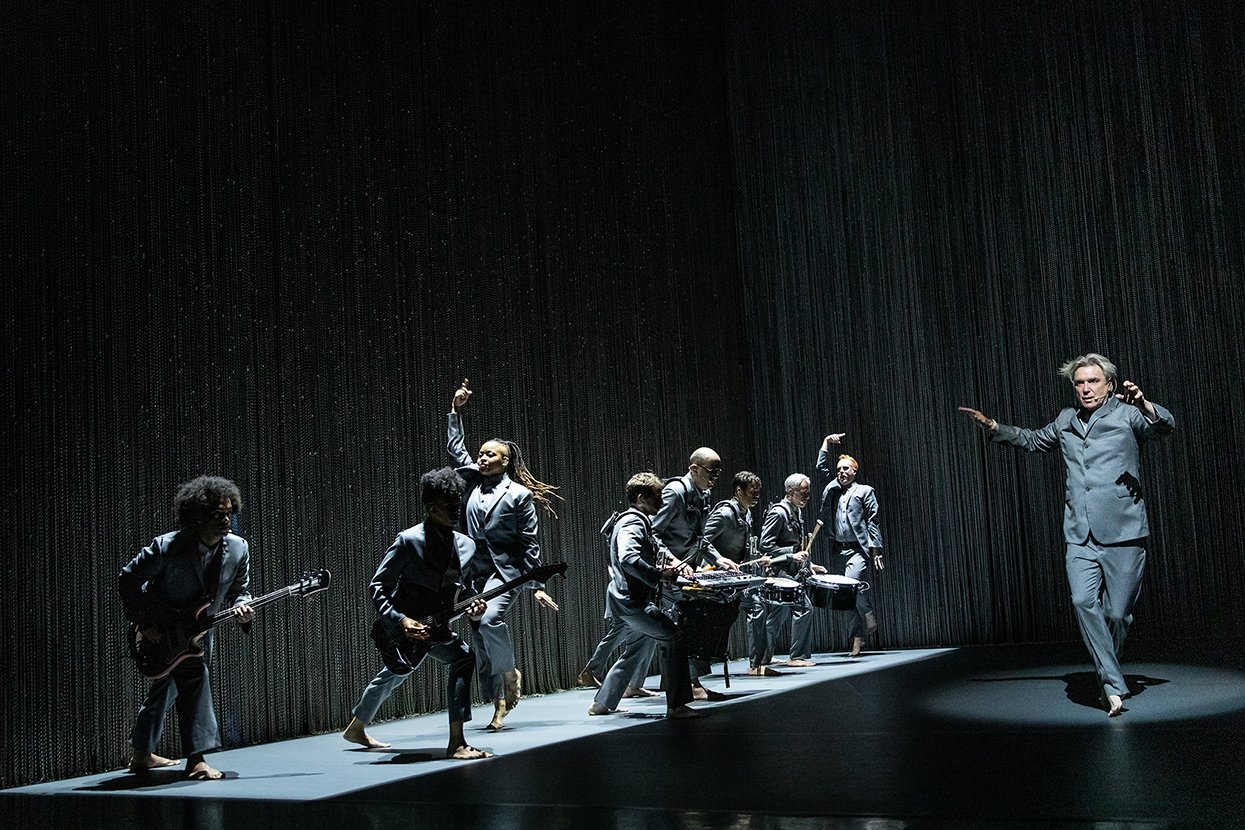
LD: Tell us about how the show’s design concept evolved.
RS: When I met David, the show was [already] well-formed. We knew the stage would be empty. We knew how the band would work [wirelessly, untethered, walking and moving around the stage freely for the entire performance]. We knew there would be three walls around the performance area.
Over the next few meetings, the idea became solid. I brought a Blacktrax pack to the first meeting as I thought it presented a solution to a problem David didn't know he had. We couldn't have done the show with followspots.
All the performers are being tracked at all times. All of the [Martin] Mac Vipers are connected to Blacktrax and can be selectively called onto any performer at any time.
[For the set], we found the chain, initially as a windproof wall for festivals and that has now taken on a whole character of its own.
The grey floor and suits were added as we wanted to be able to make people disappear but not become invisible...so the halfway point between black and white costumes.
We then went to Lititz [Clair Global’s Rehearsal Studios] for a few days to test ideas. ‘How did the chain light?’ ‘Could we make the RF work inside a metal box? What could Blacktrax do for us?’
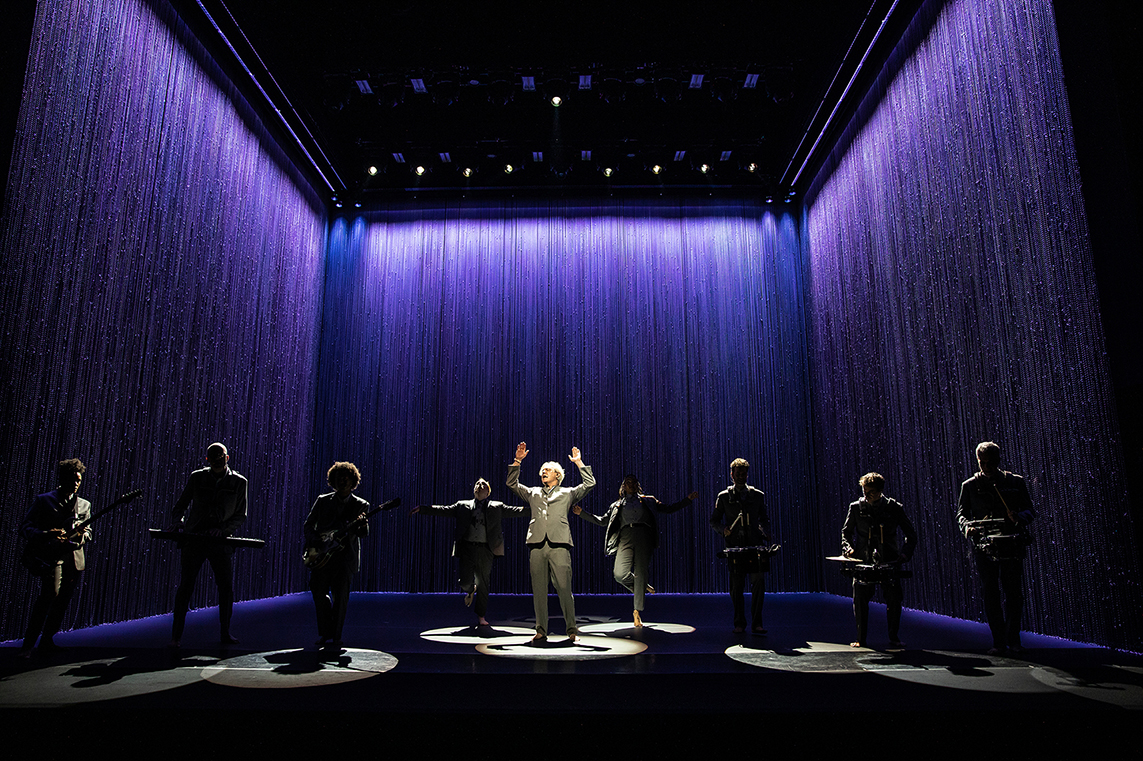
LD: How did your design evolve in collaboration with choreographer Annie-B Parson?
RS: Annie-B is a joy. She’s so supportive of collaborative ideas. After Lititz, we compiled ideas and then met with Annie-B Parson, the choreographer, to talk about how they could work. It was a slightly strange process but a really refreshing and enjoyable one.
Some songs, Annie-B had strong ideas about movement, and I responded in the usual way by lighting them. Others, we took one of the lighting sketches and found ways to stage using them. It was truly unique to have some songs lit in response to choreography and others choreographed in response to lighting.
I think the best example of this is the shadow light in “Blind.” Annie-B did an amazing job choreographing for the picture on the back wall as well as the action on stage.
This [process] continued right up to the Broadway run where we created a grid of lights for the performers for the song “Don’t Worry About The Government.”
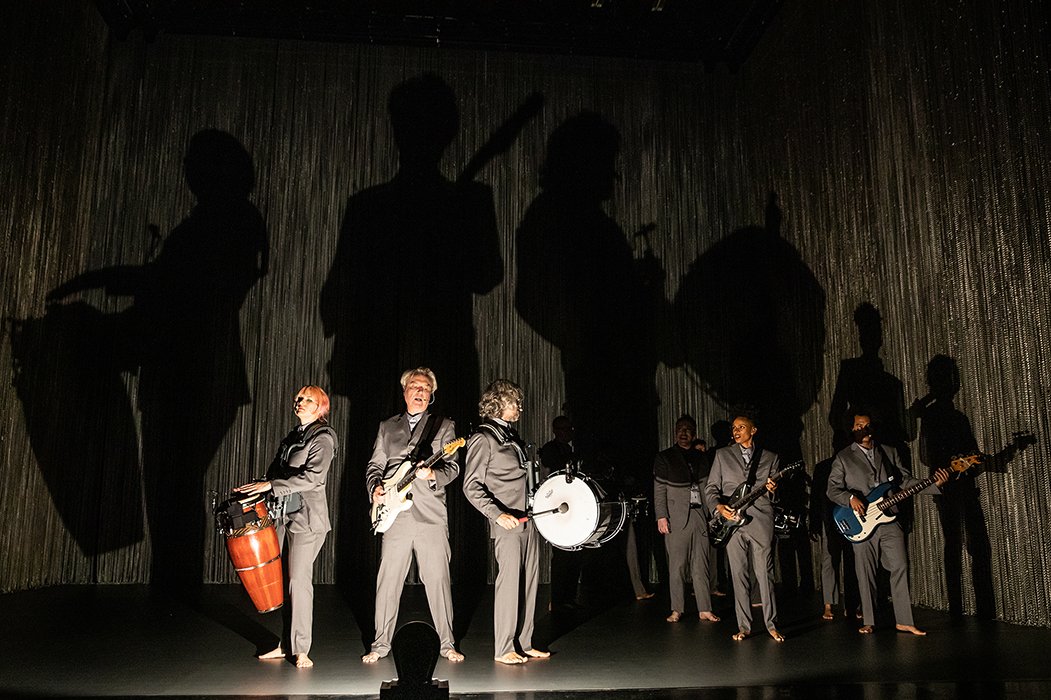
LD: Can you talk a bit more about the shadow light in “Blind” and the other single trick moments?
RS: There are a few one trick ponies: the ghost light in “Bullet” is a reference to the standard lamp in Stop Making Sense [Talking Heads’ 1984 concert film], but used in a completely different way; the battery lights at the start of “Road To Nowhere” we found in the MOMA shop.
We always knew we wanted to use shadows. The original idea was to have Blacktrax floor lights following performers around. It never really worked and felt super clunky.
I spoke to our friends at Upstaging about the possibility of a single source at the front of the stage. They went away and built the shadow light for us from a projector bulb. The first time we turned it on we knew we were on a winner.
LD: How do the two shows differ from each other?
RS: The Broadway show is more polished and has a slower-paced start.
LD: Is the set list static? Are there different encores, etc.?
RS: It’s a true Broadway show rather than a concert. It’s locked in and is performed the same every night.
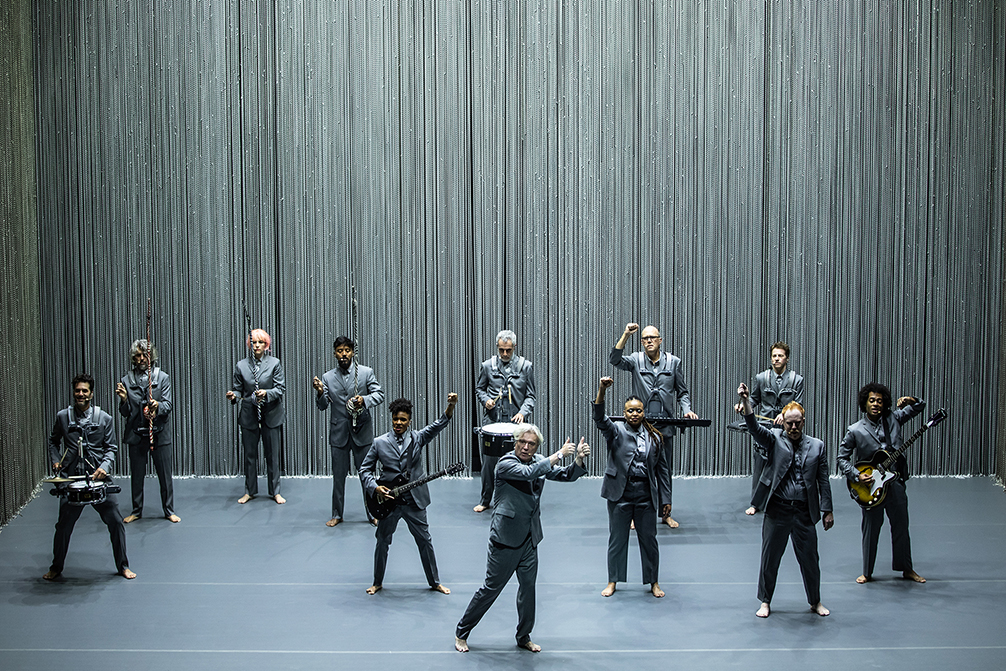
LD: Tell us about the set design. Its stark simplicity is beautifully mesmerizing.
RS: The chain is the gift that keeps on giving. I don’t think any of us could have imagined how beautiful, iconic, and versatile it would be.
LD: Tell us about the lighting design and the evolution of light throughout the show from monochromatic to the introduction of saturated colors.
RS: There is a parallel side narrative with the lighting that guided me as to how to deal with each song - it’s all mapped out but nobody else ever saw it.
Every time the setlist changed in rehearsal or Annie-B wanted to incorporate new ideas, I had to think how it might work: how would this affect the song and the pieces that came before and after?
David wanted to do a show without unnecessary blackouts. So every time we went to black, it had to be for a complete change. A blackout is such an easy move that it made song transitions incredibly difficult.
The lighting narrative follows, roughly, David’s journey in the show from individual, to group, to community. We start with no color, first in negative space, then in a wash; we then move to color and finally into complexity of cues contrasted with single tricks (the strobe, the ghost light, the shadow light).
Each section of the show finishes with a recap of everything we’ve discovered. Section 1: “I Should Watch TV,” where we see both negative and positive space; Section 2: “Born Under Punches,” which is an opera in three acts, using chromatic shifts; Section 3: “Burning Down The House,” which is as close to rock lighting as we get.
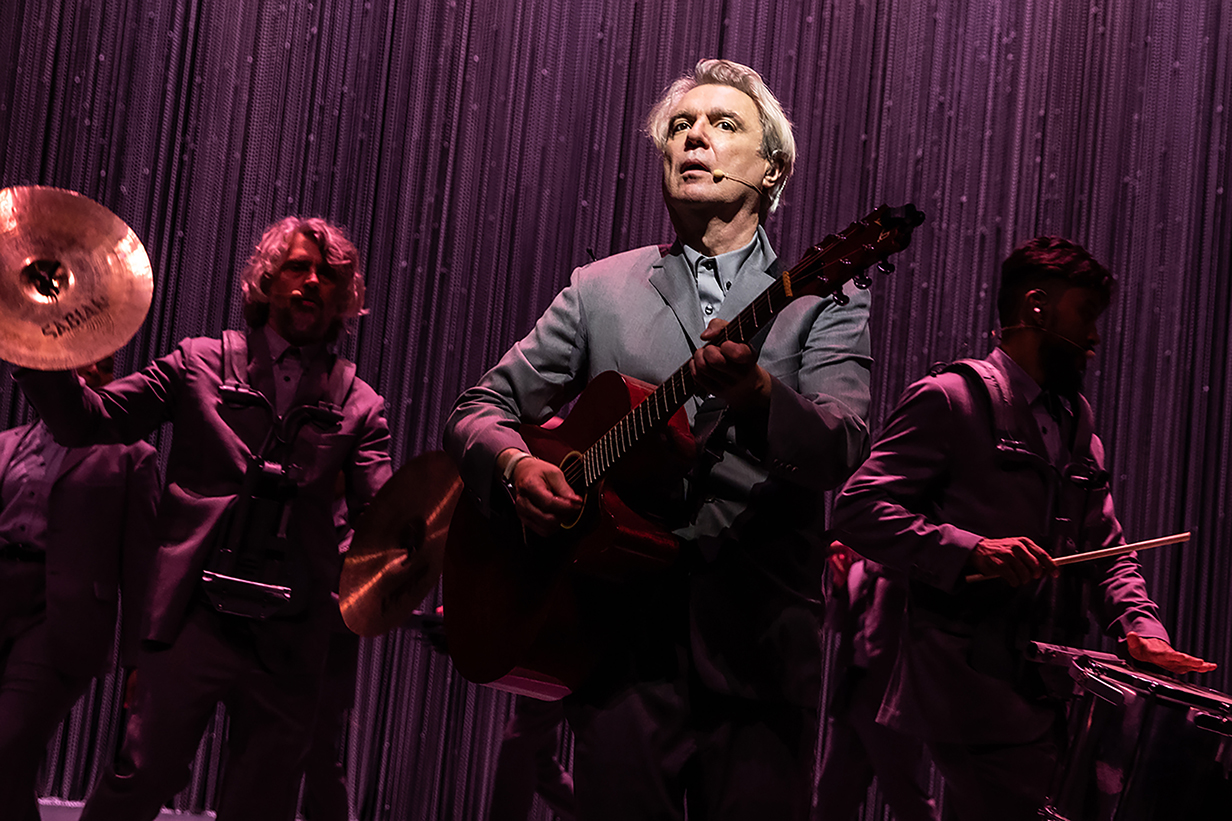
LD: What gear are you using?
RS: The gear has never been less important to a show than it is here. There are Mac Viper Performances, [GLP impression] X4 Bar 20, [Martin] Atomic LED, a Blacktrax system, and [MA Lighting] grandMAs.
LD: What are some of your favorite moments in the show?
RS: I think I love it all. It’s a very complete piece of work.
LD: Is there anyone you’d like to credit?
RS: My amazing associates without whom the show could never have happened. Douglas Green programmed the show and took it on the road for a year, and Brian Spett who turned it into a Broadway show. They’re amazing supporters, collaborators and great friends. I’m so lucky to have had them make the show with me.
Ron Schwier, our associate production electrician, has been wonderful at introducing me to Broadway and stopping me making too much of a fool of myself. He’s running the show every night.